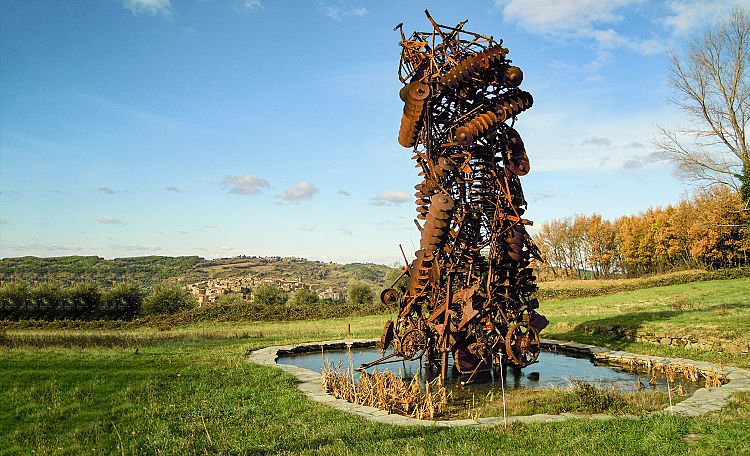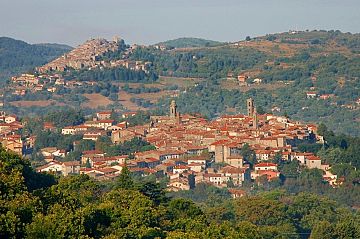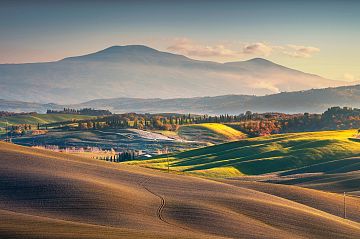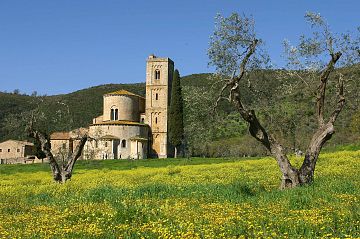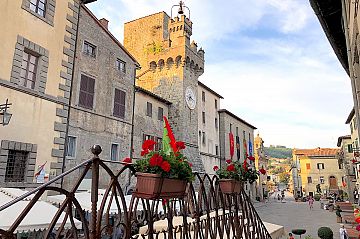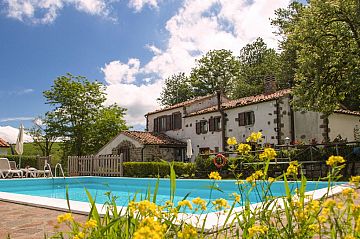Garden of Daniel Spoerri ☀️ Seggiano
- Category Art History and Culture
The Garden of Daniel Spoerri, an artist's garden in Seggiano, on the slopes of Monte Amiata.
Number of views: 6406Agriturismo - Where to stay overnight
Daniel Spoerri's Garden
In the early 1990s, the Swiss artist Daniel Spoerri bought an estate on the slopes of Monte Amiata , about 60 km south of Siena. In ancient maps this place was called "Paradise", perhaps due to the mild climate which favors a luxuriant vegetation of numerous species. One could therefore rightly speak of a "paradise garden". In 1997 "The Garden of Daniel Spoerri" was inaugurated and recognized as a non-profit cultural foundation by the Italian Ministry of Culture. It can be visited from Easter until October. It currently hosts 113 installations by 55 artists on a vast territory of approximately 16 hectares.
The foundation "The Garden of Daniel Spoerri" was inaugurated in 1997. Since then, Daniel Spoerri has continued to enrich his sculpture park with new installations - works he created or by artists and artists who have played an important role in his artistic and biographical path.
Today, visitors can discover 113 installations by 54 different artists in the large park. Some are hidden in the shade of dense thickets, such as "The Rooster and the Irreligious Mantis" by Daniel Spoerri; others attract visitors from afar, such as Dani Karavan's partially gilded olive tree ("Adam and Eve").
Death and Eros are themes that often return to the Garden (eg "Skull Tree and The Devil and the Shameless Woman" by Daniel Spoerri). Other works are confronted with mythology (Pavel Schmidt "Venus and David between the buffers" by Pavel Schmidt), experiment with language ("Palindromo" by André Thomkins) or refer to astrology (the Garden houses the entire astrological work by Eva Aeppli).
The beauty and variety of the landscape and the presence of works of art make a walk in the park fascinating, both for fans of contemporary art and for families with children. The latter especially appreciate Daniel Spoerri's "Path walled labintiforme" or the installation "Dies Irae" by Olivier Estoppey, with three large drummers or the 160 concrete geese. There is no lack of interactive works, for example the sound sculpture by J. R. Soto and the bronze installation "Chambre No. 13", a work that manages to confuse the senses of the visitor.
Eat Art
Obviously, an important role is attributed to Eat Art, which, like the "trap pictures" constitutes an essential aspect of the work of Daniel Spoerri. large fountain "Drip tray to chop", into which water drips from a height of three meters; the huge cup that welcomes the visitor right next to the entrance; and finally the only work that Daniel Spoerri has (so far) made in marble, "De claris mulieribus-Ultime dinners": a reference to the meals that famous female figures in history ate before they died.

